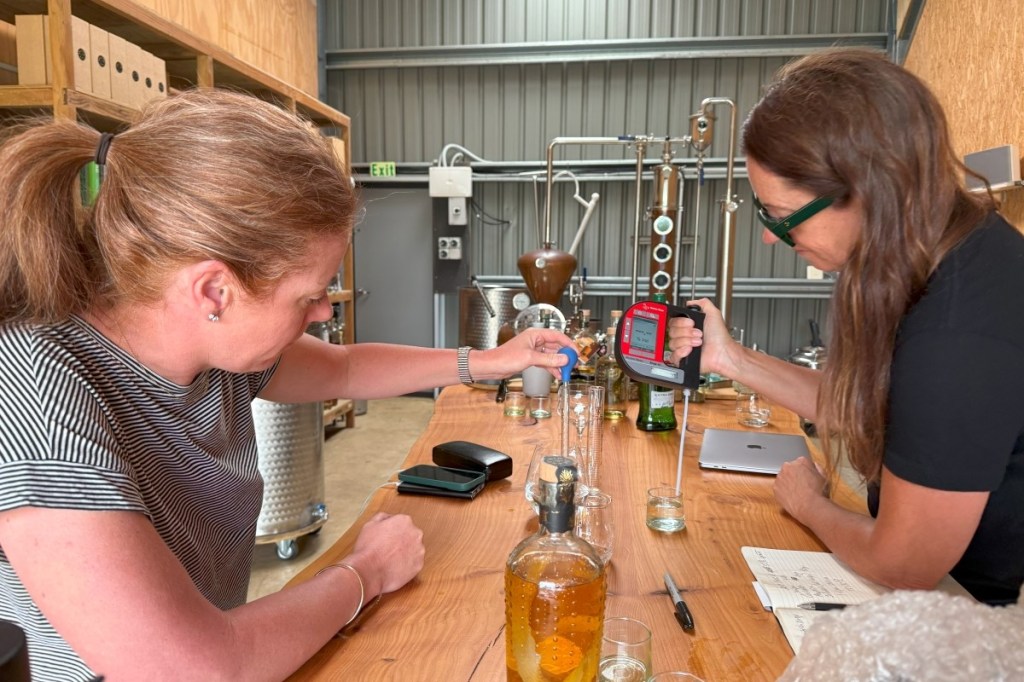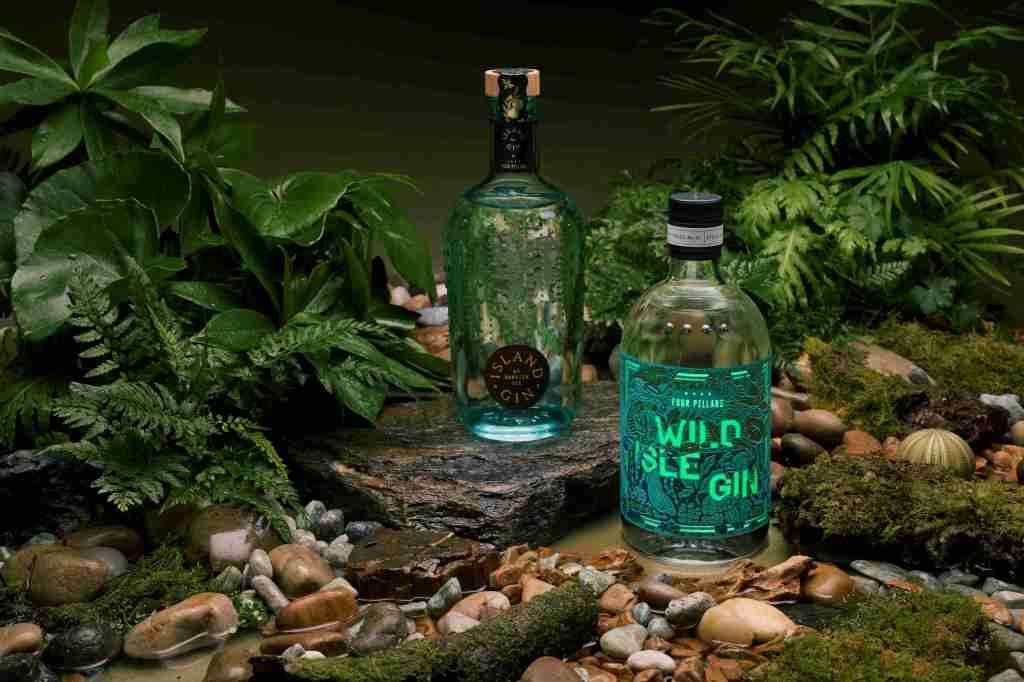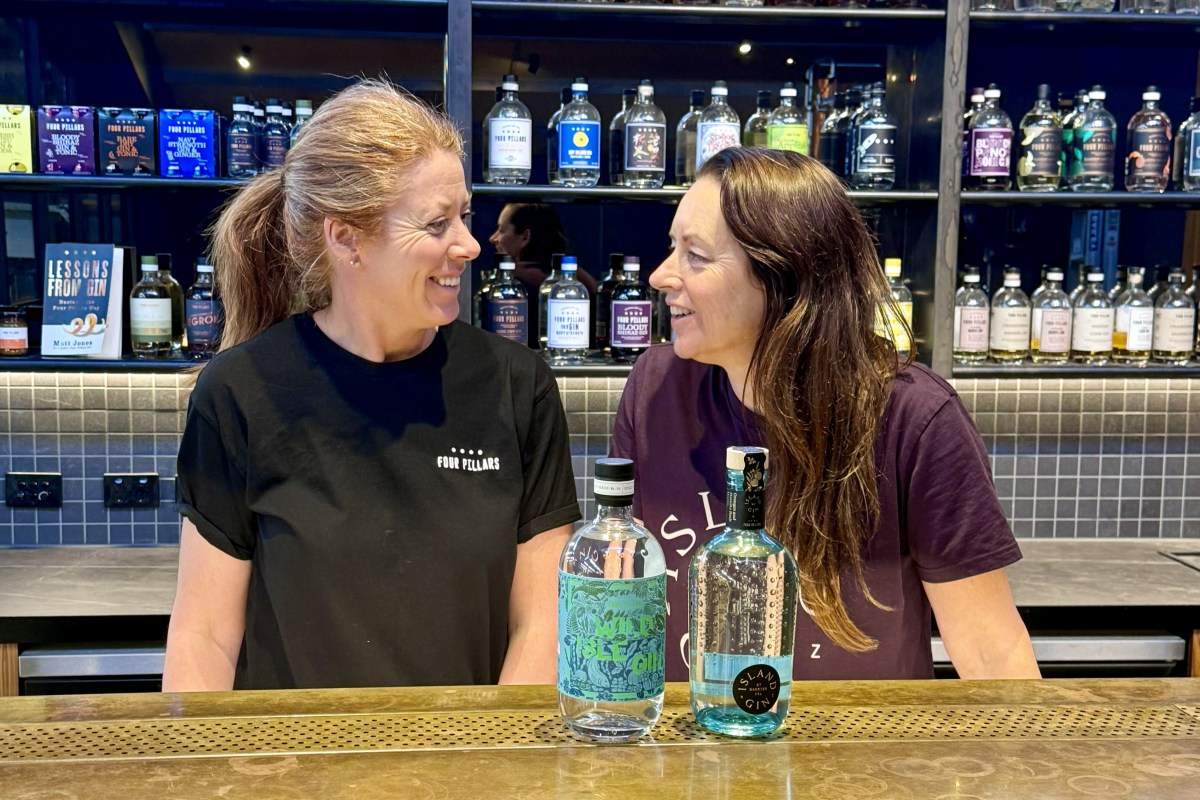On International Women’s Day every year, the voices and stories of women across the world are celebrated, as we address the issues that cause gender inequality and diversity. But despite these issues remaining, such voices and stories take a backseat once the day is done.
We think it’s worth doing the opposite and actively challenging the issues that create these gaps in our industry, which is why we launched our weekly Wednesday Women series, where we profile the stories of the inspiring women in this great and wide industry.
Today we shine a light on two women at the forefront of Australia and New Zealand’s craft spirits industries, and celebrate the power of genuine community and collaboration. Coming together for Four Pillars’ Distiller Series, head distiller Sarah Prowse and Island Gin’s distiller Andi Ross each crossed the ditch to produce their own unique gins inspired by the other’s signature flavours.
Prowse describes the Distiller Series, which was initiated by Four Pillars’ former head distiller Cameron Mackenzie, as a means for sharing knowledge through collaboration and innovation.
“The series is about relationships. It’s about learning and sharing the spirit of collaboration by teaching each other new skills and creating something special,” she said.
Ross agrees, emphasising that the pair’s working relationship was special as it went beyond what went into the bottle.
“It’s a unique thing because I think it hasn’t really been done before in the world – two female distillers collaborating so closely at this level. We’ve had so much fun working together,” Ross told The Shout.
“The cross pollination of the two countries is great. I think we’ve got a lot to say on the gin stage worldwide. I think we are changing things. So, we’re super excited to have been chosen out of a world full of options,” she added.
Four Pillars’ Wild Isle Gin
For Four Pillars, Prowse created Wild Isle Gin – inspired by New Zealand’s Great Barrier Island, and the home of Island Gin.
“My goal was to create a really beautiful maritime briny note to the gin without it being dank. I wanted it to stay away from those marshy characteristics, but rather be fresh and bright with citrus, salt and herbaceous notes. I tried to capture that smell of the moment you get down to the beach and get that thick salty smell from the wind,” Prowse said.
She travelled to the home of Island Gin and took inspiration from local ingredients, experimenting with flavours with help from Ross.

“Going to meet Andi and learning how she distils and how she comes up with recipes, works with different botanicals and experiments was so special. We spent several days foraging the island and its beaches and looking at lots of different types of seaweeds, which we took back to the distillery.”
She continued: “We looked at different tea trees, salt bushes – all those sorts of botanicals that are used in cooking to create a beautiful salt note without it being salty. We tried different seashells as well. We both learned a lot, using ingredients that neither of us had used before. There were definitely some hits and some misses, but it was part of the process.”
Taking what she learned home to Australia, Prowse hunted for bull kelp off Victoria’s Great Ocean Road, bottled seawater and sourced old man saltbush and kunzea – two Aussie coastal bushes – for the final product.
She also used mānuka honey gifted by a local beekeeper back on Great Barrier Island.
“It’s really a clean, interesting look at how coastal botanicals can create a beautiful, complex, briny gin. We were very lucky to be able to use the stunning honey off the island. It was a real great gift from Andi and a nod to all her gins that use it too.”
Island Gin’s Orange and Mānuka
Ross also had the opportunity to visit Four Pillars’ Healesville headquarters and experiment with their signature botanicals.
“Coming to Healesville was exciting. Seeing how Sarah distilled oranges and the different types of stills the team use, the scale of some and their nuances.”
Upon arrival Ross said she had a plan for her gin, but eventually decided to pivot, learning a lesson in trusting the process.
“My inspiration was a martini gin inspired by the Four Pillars Olive Leaf. I had my mind set but I just wasn’t happy with it. My process started off, very lineal, very scientific. But if things aren’t how, you envisage it, sometimes you’ve got to let it go. I partly learned that from Sarah, being able to start again and not be afraid to change direction,” she said.

Prowse added that it was great to see Rossdraw inspiration from Four Pillars’ signature oranges.
“She came out a couple of times, and we did a whole bunch of experiments with other botanicals. That is how she ultimately came up with the oranges, because it just complemented the honey so well,” she said
Ross added: “Our key ingredient is honey. I thought oranges and honey traditionally in cuisine work well and I wanted to take a key botanical from their range and make it our own in our space. They’re great with citrus so Sarah taught me all about distilling oranges.”
Lessons learned
For both women, one of the most valuable parts of this collaboration was the skills they learned from one another, which they both hope to carry into their future work.
Prowse said the experience gave her a regained confidence to try new things and equally be comfortable with failing.
“Sometimes you look at botanicals and write them off. But I learned a lot about not being afraid to try things and fail and realising that there are a number of variables when it comes to creating flavours. When you crush it in your hand and you smell and think it’s not great but when you distill it, you might get a totally different profile.”
Similarly, Ross said Prowse’s work opened her eyes to creative possibilities – particularly with more of Great Barrier Island’s natural resources.
“It has given me ability to look beyond what we’re doing here at the moment. It’s given me strength in my resolve to think beyond our tight little group of gins. I’ve got the confidence to play around more and create something completely new,” she said.
“I’d never thought about using seawater before Sarah came to visit. It’s a very saline quality and a lovely addition for a salty nod to the ocean, which is something I’m excited to experiment with more.”

